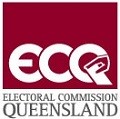On 6 June, an order in Council provided for the separation of Queensland from New South Wales. If you were an adult male over 21 years old with three-year residence qualification (or six months if owner or lessee of property), you could vote in Queensland. However, if you were in the military or police, you weren't allowed to vote.
Secret ballot, 5-year parliamentary terms and first-past-the-post voting methods commenced. The first distribution of electoral boundaries also occurred in this year.
In 1860, the first general election for members to the Queensland Parliament occurred. There were 26 members elected from 16 electorates for the Legislative Assembly and 11 nominees to the Legislative Council.
1893 saw the introduction of 3-year parliamentary terms to the Queensland Parliament.
For the first time, women could vote in Queensland elections. Under the new Act, men and women could vote regardless of whether they owned property. Aboriginal peoples and Torres Strait Islander peoples and certain non-European immigrants were still disqualified.
A change to the Electoral Districts Act saw 72 one-member electorates in play. The 'one vote, one value' democratic principle was introduced to Queensland. Despite a 20 per cent tolerance, this approach made one person's vote about equal to someone else's vote.
The Legislative Council was abolished on 23 March.

Irene Longman, a Progressive Nationalist for Bulimba, was the first woman elected to Queensland Parliament.
The Elections Act saw another change with enrolment and voting compulsory for Aboriginal peoples and Torres Strait Islander peoples.
In 1973, the voting age was reduced to 18 years old.
By 1985, Queensland had 89 electorates in four zones.
The Fitzgerald Inquiry into police corruption came to a close with the report tabled in the Queensland Parliament on 3 July. The report recommended the establishment of an Electoral and Administrative Review Commission (EARC) which formed shortly after.
By 1991, Queensland had 89 electorates. The new Act saw zones abolished. Optional preferential voting was reintroduced after 30 years of compulsory preferential voting. For the first time, there were joint Commonwealth-State electoral rolls.
The independent Electoral Commission of Queensland (ECQ) became a statutory authority replacing the State Electoral Office.
The ECQ conducts local government elections after the amalgamation of local governments.
The ECQ became the authority responsible for local government elections.
Compulsory preferential voting was reintroduced in 2016. Queensland had 93 electorates and 4-year fixed parliamentary terms.
Property developers can no longer donate to political parties or candidates. This prohibition also applies to the developer's associates in Queensland.
On the 1st of July 2019, ECQ adopted a new logo to reflect a new era for the Commission.
Logo July 2019 to present date
![]()
The new logo represents democracy, diversity, and unity.
The individual boxes represent ballot boxes, state electorates and local governments, to convey the idea of everyone around Queensland having a voice in elections and being a part of the democratic process.
The colours used across the boxes combined with the varying shapes of the boxes are a way to show the diversity across Queensland; our different regions, different generations, different ethnicities, different backgrounds, and our different needs and goals.
Starting from the Queensland Government maroon, the colours transition to create a sunrise/sunset to play on our standing as the Sunshine State.
By bringing the boxes together into the shape of Queensland we show that every person in the state gets a voice, and it’s the voice of the people that make Queensland the great state that it is.
Logo prior to July 2019

Check out the Australian Electoral Commission's factsheet, Everyone's Parliament.